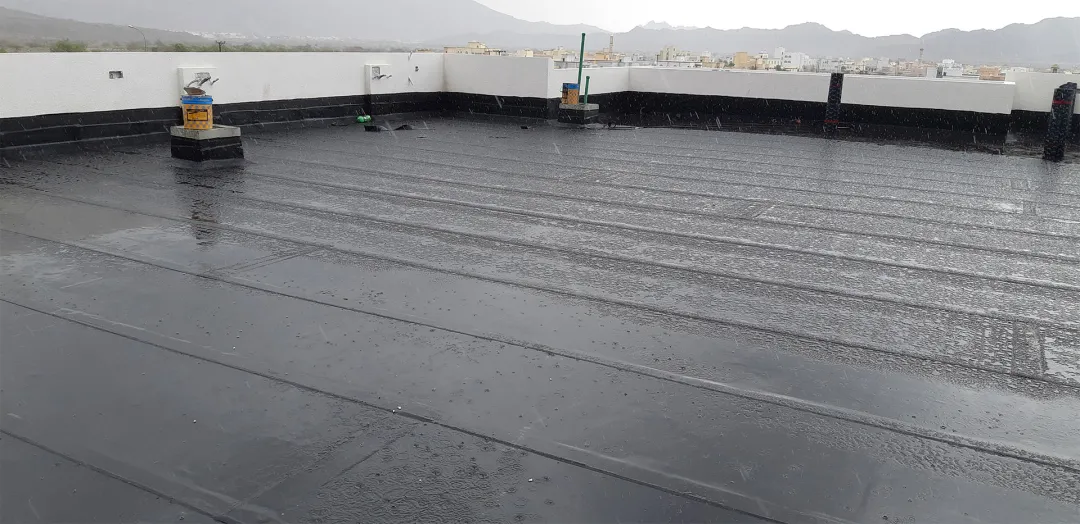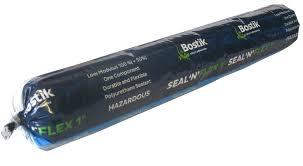APP Waterproofing Membrane
 Waterproofing membranes are designed to protect a surface from the perils of leakage. Water penetration and leakage, if neglected, can have disastrous consequences for a structure. A waterproofing membrane acts as a protective layer which can be applied either on the roof, retaining walls or basement of a structure. There are different types of waterproofing membranes which can be broadly classified as sheet-based membranes and liquid-based membranes. Sheet-based membranes are in the form of rolls whereas liquid applied waterproofing membranes come in the form of liquid that can be sprayed on the surface. Bituminous waterproofing membrane is one of the most common sheet-based membranes. This article discusses the APP waterproofing membrane – one of the most popular and high utility bituminous membranes, highly regarded for its applications on the roof. Let’s understand what this membrane is and why is it so popular.
Waterproofing membranes are designed to protect a surface from the perils of leakage. Water penetration and leakage, if neglected, can have disastrous consequences for a structure. A waterproofing membrane acts as a protective layer which can be applied either on the roof, retaining walls or basement of a structure. There are different types of waterproofing membranes which can be broadly classified as sheet-based membranes and liquid-based membranes. Sheet-based membranes are in the form of rolls whereas liquid applied waterproofing membranes come in the form of liquid that can be sprayed on the surface. Bituminous waterproofing membrane is one of the most common sheet-based membranes. This article discusses the APP waterproofing membrane – one of the most popular and high utility bituminous membranes, highly regarded for its applications on the roof. Let’s understand what this membrane is and why is it so popular.
What is an APP waterproofing membrane?
APP stands for Atactic Polypropylene. APP membrane is the most commonly used waterproofing material on concrete roofs and low-slope roofs. APP membrane is applied to asphalts with a torch. Applications of APP membranes aren’t limited to just roofs. Man made ponds, bathrooms, water tanks, curtain walls, concrete channels can be protected against water ingress with APP waterproofing membrane. APP membrane is a durable waterproofing material largely preferred by contractors for safeguarding surfaces against leakage.
Features of APP membrane
Terraces and roofs are directly exposed to rains, highly increasing the chances of a leakage. Applying APP waterproofing membrane serves as an excellent barrier against water penetration, thanks to its many useful features. The most important features of APP that makes it a popular choice for waterproofing applications include the following:

- APP membranes are characterized by high tensile strength. Tensile strength refers to the amount of stress that can be applied before a material breaks under tension.
- APP membranes are 100% impermeable, ruling out any chances of leakage after applying on the chosen surface.
- These are resistant to weathering. APP membranes are durable and won’t succumb to changing climatic conditions which is absolutely a must-have feature for a waterproofing material.
- APP membranes possess isotropic properties. Isotropic properties mean that the materials in the membrane won’t change properties in response to a change in direction.
- Seam integrity is another important feature of the APP membrane along with providing outstanding bondability.
- These membranes provide flexibility at low temperatures and dimensional stability at high temperatures.
- APP membranes are more easy to apply under hot-melt conditions.
Different types of waterproofing membranes
Besides APP waterproofing membranes, there are several others with a range of features, benefits and applications. Let’s have a look at the different types of waterproofing membranes available. 
Self-adhesive modified bituminous membrane
These are membranes made of polymers, asphalt and tackifiers. Fiberglass, polyester or sometimes a combination of both the materials are used to give strength to this membrane. A release film or paper protects the self-adhesive layer in this type of waterproofing membrane. The paper is to be discarded at the time of installation.
Polymer modified bitumen membrane
Polymer modified bitumen is one of the most popular waterproofing materials. The material provides excellent flow resistance in hot conditions and withstands atmospheric changes. There is a polymer film both on top and bottom of the material. Polymer modified bitumen membrane materials make for a good underlay in pitched roofs and resists diffusion of moisture.
Pros of APP bitumen membrane
It comes as no surprise that the APP bitumen has been around for a few decades considering the multiple benefits it has to offer. Bitumen when modified with APP makes for a strong and versatile waterproofing material. Listed below are the key benefits of APP membrane:

- The absence of seams in APP membranes guarantees 100% protection against leakage.
- It offers enhanced bitumen performance with excellent UV resistance
- Rapid changes in temperature have no effect on this waterproofing material’s efficiency.
- APP bitumen waterproofing possesses fire resistant properties coupled with improved flow resistance at high temperatures.
- These are excellent for applications in cold areas as even the coldest temperatures can’t inflict damage on this waterproofing material.
- Flexibility is an important feature as waterproofing materials are prone to damage from direct exposure to the atmosphere. APP scores high on flexibility as it is proven to survive storms and harsh atmospheric conditions with no damage such as cracks or dents.
- Several manufacturers offer warranties lasting for 10-20 years for APP membranes. By opting for an APP waterproofing membrane, you stand to gain from warranty protection.
- It offers optimum adhesion and elasticity and is excellent for protecting commercial buildings.
Cons of APP membrane
Though APP waterproofing membrane offers numerous advantages, there are also some disadvantages to it. Listed below are a few cons of using APP membrane:
- APP waterproofing membrane won’t work well with all surfaces.
- Your roof must have a draining system for this waterproofing material to work effectively.
- In the absence of a draining system, the standing water will penetrate and wear down the material.
- APP waterproofing membrane isn’t recommended for rooftop patios.
6 key factors to consider for waterproofing membrane application
For best results from waterproofing membranes, one needs to be careful about how it is applied. A lot of the problems arise as a result of negligence and lack of knowledge about the most ideal way to apply waterproofing materials. A minor flaw or oversight could render the waterproofing material completely useless. Listed below are a few things to keep in mind during application of waterproof membrane: 
- It is important to ensure that the coating materials are resistant to abrasion while being accommodative of building movement. When membranes are applied too thin with unbonded screeds applied over it, mechanical abrasion is bound to happen. Ruptures and blisters are common outcomes of mechanical abrasion.
- The bond breaker junctions become incapable of accommodating movement when waterproofing is applied under a screed. The coating movement is restricted by the compacted screed when releasing from the bond breaker. To tackle this, one needs to put a foam rod to the perimeters prior to applying the screed. If the ideal Dry Film Thickness (DFT) is not achieved, movement accommodation may get more difficult.
- It is important to consider the DFT as there are consequences to both thicker and thinner coatings. A coating with even DFT is restricted from stretching.
- Different circumstances demand varying ranges of DFT. Wall applications in wet areas may demand 0.6-1 mm DFT whereas floor applications may require 1-1.3 mm DFT. Depending on the coating material, a DFT of 1.5-2 mm may be needed for podiums and balconies whereas pools, pits and planter boxes require DFT of 2-3 mm minimum.
- Three coats are necessary in case of low viscosity coatings to achieve the optimal WFT (Wet Film Thickness) and DFT.
- Thin coatings give rise to abrasive damage whereas thick coatings result in re-emulsification and splitting. Substrates must be prepared with utmost care to ensure desired thickness for optimal performance.
The weather conditions and the surface need to be taken into account while applying waterproofing membrane. It is also important to get a good applicator if you want to achieve best results. Keeping the above factors in mind will immensely help increase the performance of waterproof coatings.
Difference between SBS and APP
SBS and APP both are bitumen modified waterproofing materials. But what’s the difference between the both? Let’s discuss in detail so you can make an informed decision.
APP bitumen is plastic asphalt whereas SBS bitumen is elastic asphalt. The type of bitumen modifier used in SBS is synthetic rubber whereas the one used in APP is plastic. Here are a few key differences between both presented for better understanding:
1. Low temperature flexibility for SBS: -22o F to -5o F
Low temperature flexibility for APP: 14o F to 32o F
2. Softening point for SBS: 230o F to 270o F
Softening point for APP: 245o F to 300o F
3. Elongation with full recovery for SBS: >1000%
Elongation with full recovery for APP: 5-10%
4. Serviceability range for SBS: -20o F to 270o F
Serviceability range for APP: 15o F to 300o F
When torched, APP membranes will turn into something similar to candle wax as it crosses temperatures above 300o F. The bitumen will flow like a free-flowing liquid that can be mopped across the surface. It exhibits high temperature tolerance during the heating process.
SBS on the other hand possess different properties than that of APP. SBS, unlike APP, won’t flow when heated. It is rather sticky and the stickiness is directly proportional to the amount of heat applied. SBS however is more flexible in comparison to APP. SBS will start flowing like liquid when subjected to more heat but that however means it is overheated.
Application process
Before applying APP waterproofing, it is necessary to ensure that the surface is free of any oils or chemicals. It is recommended to use a primer on the application surface. A welding torch is used to maintain 10 cm overtopping for joints and 15 cm overtopping for ends. With a trowel, the mineral stone that coats the surface on joints is heated and the minerals are buried into the bituminous surface before the joints are welded together. 
Membrane installation starts from the lowest point of the slope and progresses to the highest point. The substrate and underside are torched. When the shiny bitumen surface is exposed after the underside heating of the membrane, the membrane is rolled forward. The membrane is pressed firmly against the substrate for superior bonding. Once the torching process of the membrane starts, it shouldn’t be lifted or shifted. The overlaps are then pressed into the seam with a trowel. While maintaining the side and end overlaps, a round tip trowel is used to smoothen the bitumen produced at the seams. Special care should be taken to seal angles and abutments. The last step is to seal the edges into the grooves.
SHIVSONS is one of the pioneers in supply and application of waterproofing systems with a rich experience of over 30 years. With constant focus on innovation, we are deeply committed to provide products of latest technologies in the waterproofing and construction industry. Get in touch with us today for superior products, great customer service and exceptional workmanship for your waterproofing projects anywhere in India.




_-_Copy1.jpg)